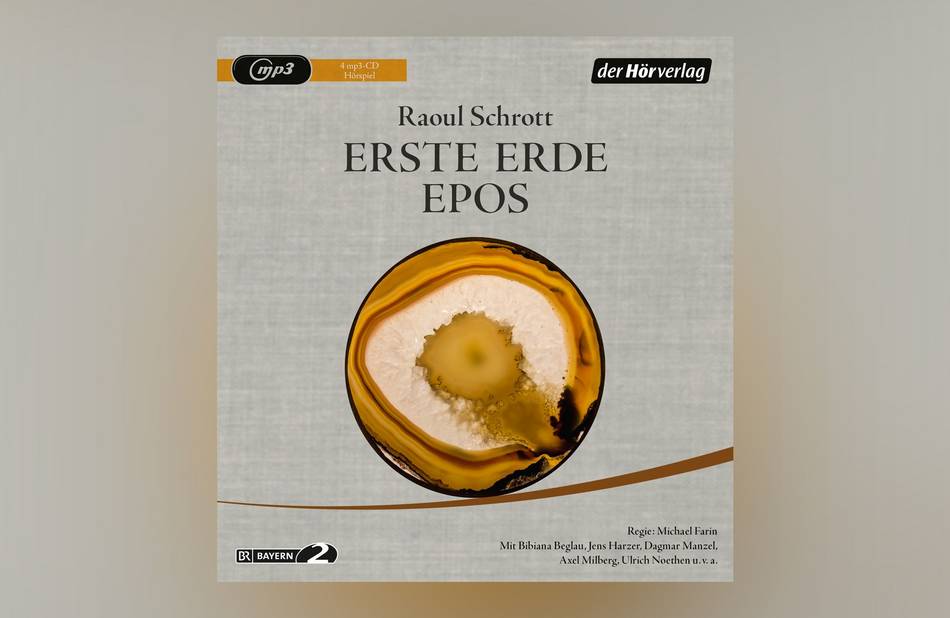Raoul Schrott: The First Earth
From the creation of the universe to the invention of writing

Never before have we had so much knowledge about humans and the universe at our disposal. Yet the larger the heap of data becomes, the less we understand. We know that the ancient world-creation myths are not true – but we have no other story to explain how we and the world came about. The goal of this research project was to tell this story in the form of an epic tale.
“The First Earth” – An Epic Tale
On one hand, the religious level of epic tales hinders us from creating a contemporary version of how our world was created. We simply can no longer tell the story by using heroes and gods. On the other hand, in contrast to ancient times, it hardly seems possible to gain an overview of our current state of knowledge and then present it poetically. Many disciplines – quantum physics, neurology, astronomy – seem too specialized and obscure, although their findings and practical applications have intrinsically shaped our world. Each specialized field produces an ever increasing amount of abstract terminology, yet only a figurative language could make the ideas concealed within more tangible, understandable and communicable.
“Climate change”, for example, is an extremely abstract expression for an increase in violent storms and floods. When the right imagery is applied, like the “flap of a butterfly’s wings in California changes the weather in China”, we can convey much more about this complex relationship than the language used in the climate treaty of Copenhagen. That conscious use of language expressed in such an image – that is the very essence of poetry.
What is “The First Earth” about?
In the last one hundred years, we have transformed this planet with our technical culture like no other previous life form. That which is left of the First Earth – the earth that existed for 4.5 billion years before hominids appeared – will soon be reshaped and built over. This project aims to catch one final glimpse of it before it disappears.
Thanks to discoveries at excavations on continents around the world, scientists and researchers have done much to reconstruct the history of earth’s creation and the evolution of life. The rock samples, fossils and bones taken from these excavations become material for scientific discourse and are eventually stowed away in museum cases and institute storerooms. What is lost in the process, however, is their context which evokes that important sensory experience – that of a discovery, as a place in the here and now, where these inconceivably ancient relics are suddenly pulled out of the ground or are revealed as a result of wind erosion.
The goal of this project was to narratively visit the important chapters of earth history and that of the human race – to go back to those sites of discovery and excavation, on which our knowledge of the past is based. The experience gained during the journey will form a connection to the far distant past, for which these places have become symbolic.
The four books
The first book centres on the creation of the universe, the elements, our solar system and the earth. In interviews with scientists, the specialized terminology was filtered to obtain information that we can understand. With this information, the epic sketches impressive images which did not exist before. The second book deals with the creation of life, from early flora and fauna to the advent of mammals. The third book follows human development – from early hominids to modern Homo sapiens – the evolutionary history of our species, the fossils of Lucy and Ardi in Chad, the Australopithecus and Ardipithecus in East Africa and the Neanderthal. The fourth book focuses on the symbolic forms of our species, starting with ancient artefacts, cave paintings, sculptures, prehistoric musical instruments and leading to the first traces of settled existence at Göbekli Tepe, in Jericho and Catal Höyük, and finally ending with the invention of writing.
The story itself is told on several narrative levels: the myths of world history, the discourse of the natural sciences, the dialogue between individual researchers, and a travelogue with descriptions of the various locations.The book release of the epic tale “The First Earth” was in autumn 2016.
Contact
Antonia Lahmé
German Federal Cultural Foundation
Franckeplatz 2
06110 Halle (Saale)
Tel.: +49 (0)345 2997 117
Fax.: +49 (0)345 2997 333
